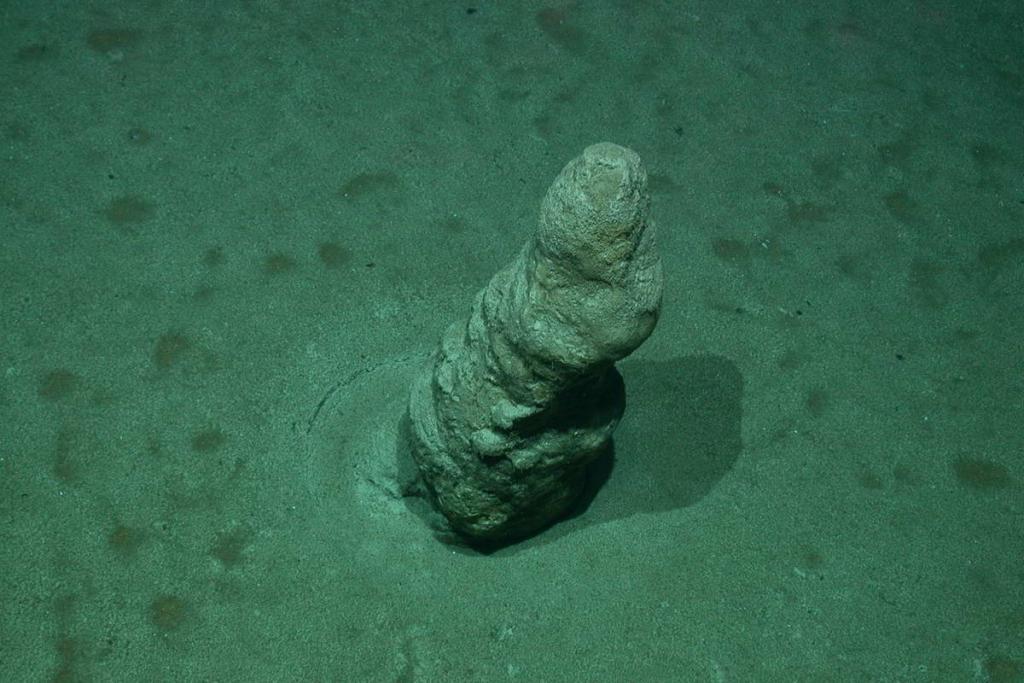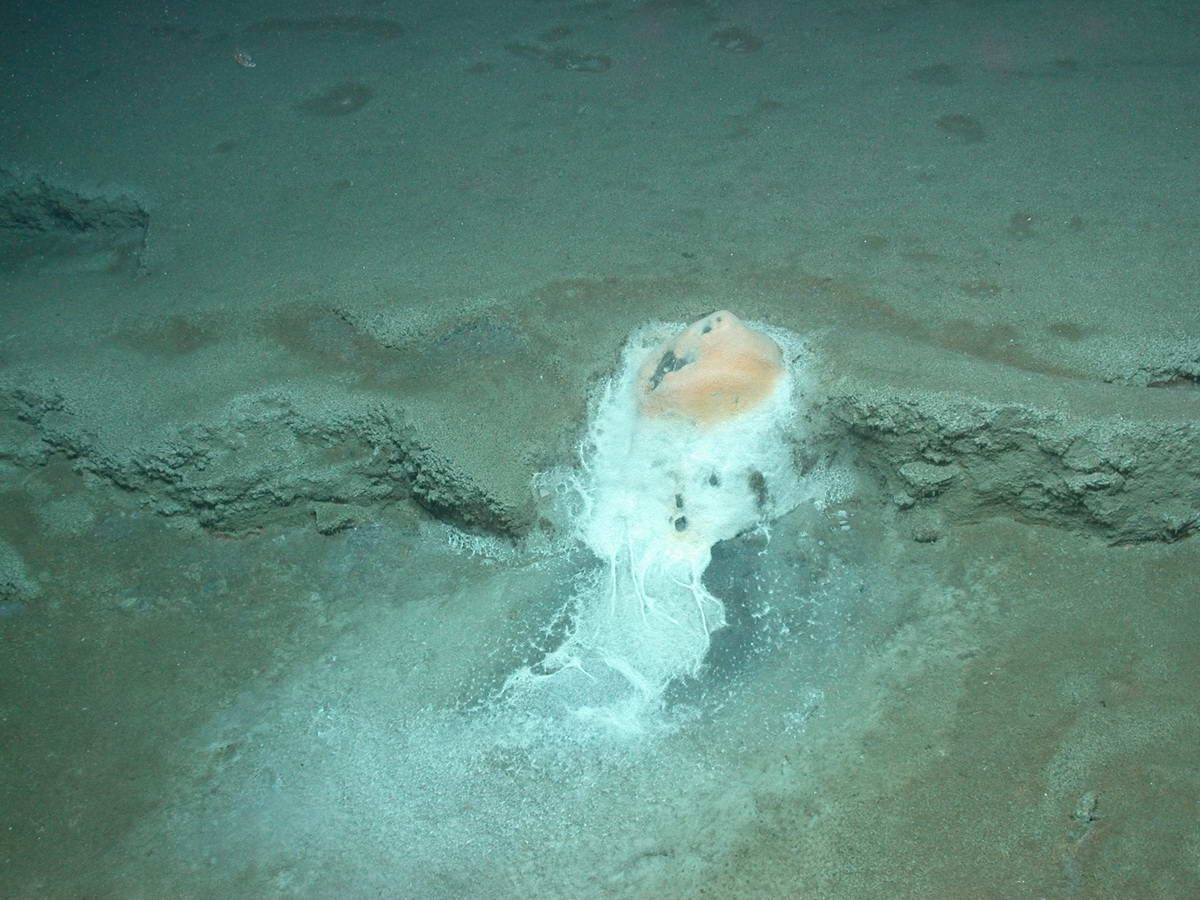A surprising finding: stromatolites in the deep sea
April 20, 2018 Research team discovers fossils at 730 meters depthWith an age of 3.5 million years, stromatolites are among the oldest fossils. However, lime deposits have so far occurred only in shallow seas with water depths of up to ten meters. Because the limescale deposits can only grow if light-dependent and photosynthetic microorganisms are involved. A new study by geoscientists shows that using light-independent, chemosynthetic microbes, stromatolites can also grow on the ocean floor in 731 meters of water.
Bremen geoscientists discovered in an expedition in the Arabian Sea off the coast of Pakistan dome-shaped microbial mats at methane outcrops in 730 meters of water. With the help of the gripper arm of diving robot "MARUM-QUEST 4000" they were able to recover a calcareous dome approximately 40 centimeters high. Inside, the team found finely laminated and arched limestone structures originally covered by microbial mats.
These microbes were examined more accurately at MARUM geochemically. The result: methane-degrading marine microorganisms, the archaea, are involved in the construction of the so-called stromatolites. The Greek origin of the name already hides the form of limestone hills: the ancient Greek stroma stands for ceiling, lithos for stone. "Unlike the microsynthetic microbes that live in the shallow sea, which extract energy for their metabolism from the sun's rays, these microbes use energy generated in the extraction of methane in the deep ocean. In the dark, they operate chemosynthesis," says MARUM's Gerhard Bohrmann.
Bacteria living on the seabed transform the hydrogen sulfide that is produced during methane decomposition. "We were able to identify the fiber bundles of these sulfide-oxidizing bacteria in thin sections under the microscope," reports Dr. med. Tobias Himmler from MARUM, first author of the study. "How these bundles are received is extraordinary. Since the bacteria in the Arabian Sea have hardly any free oxygen at this depth, they probably use nitrate instead of oxygen, which promotes calcification," adds Prof. Dr. med. Jörn Peckmann from the University of Hamburg.
Their assumption corroborates a geochemical model that confirms calcification through the chemosynthesis-based metabolism of microbes. From this, the researchers conclude that unlike the previously known photosynthetic microbes also light-independent chemosynthesis based microbes can build up stromatolites - even in the deep sea.
Stromatolites are the most common fossils in rock formations older than 541 million years. Similar to today's Arabian Sea, in the oceans before that time, in the so-called Precambrian, there was little oxygen in the water. The discovery of chemosynthesis-based stromatolites in the Arabian Sea provides new insights into how these ancient fossils might have originated. "Until now, only photosynthesis-based stromatolites were known, for example from the Bahamas or Shark Bay on the west coast of Australia. In contrast to the chemosynthesis-based stromatolites, these differ in structure and their internal structure from many Precambrian stromatolites," explains Tobias Himmler. The researchers therefore speculate that chemosynthesis has contributed more than previously thought to the growth of stromatolites in the Precambrian region more than 541 million years ago.
More information: www.marum.de.
Link to the study: pubs.geoscienceworld.org//stromatolites-below-the-photic-zone

